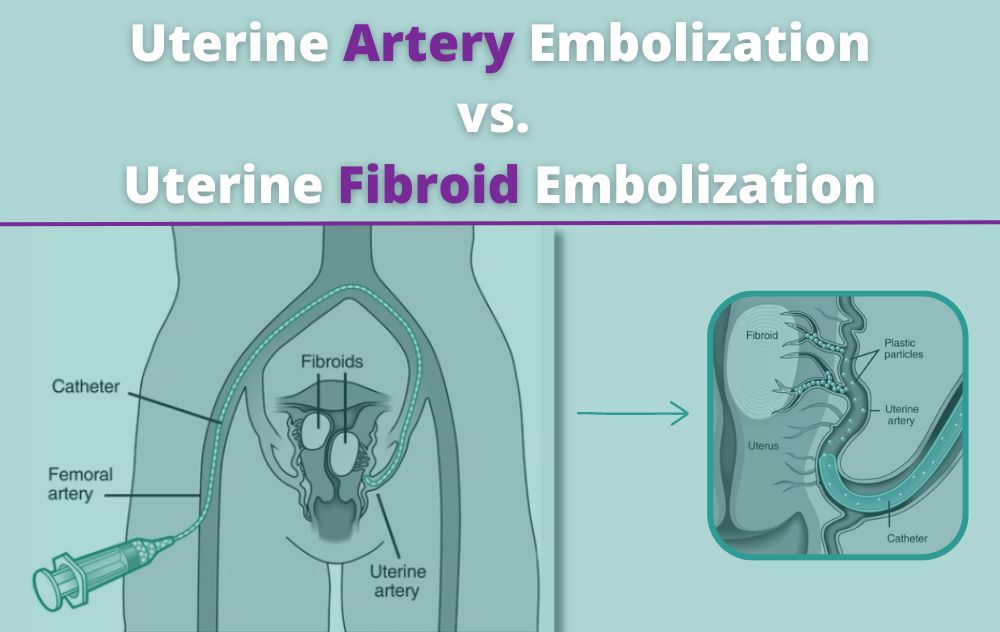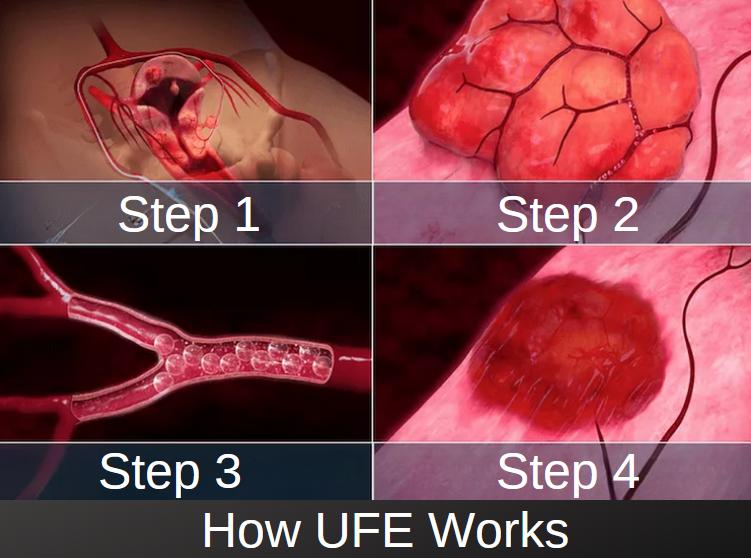
Is Uterine Artery Embolization the same as Uterine Fibroid Embolization?
The terms uterine artery embolization (UAE) and uterine fibroid embolization (UFE) are many times used in a similar manner because they reference the same procedure. The difference between the two terms is that UFE is the more specific term related to the treatment of fibroids, while UAE refers to the general technique of embolization.
To treat uterine fibroids without surgery, interventional radiologists use a minimally invasive procedure called embolization. Depending on what they are treating with embolization will often determine the use of UFE or UAE.
Understanding Uterine Fibroid Embolization (UFE)
Uterine fibroid embolization (UFE) is a minimally invasive procedure that treats uterine fibroids by blocking their blood supply. During the procedure, the doctor inserts a thin catheter into the arteries that supply blood to the uterus, guided by imaging technology. Small particles or embolic agents are then injected into these arteries, blocking the blood flow to the fibroids. By depriving the fibroids of nutrients and oxygen, they shrink over time, reducing symptoms such as heavy menstrual bleeding, pelvic pain, and cramps.
Exploring Uterine Artery Embolization (UAE)
Uterine artery embolization (UAE) is essentially the same procedure as UFE. UAE focuses on the targeted embolization of the uterine arteries, the major blood vessels that supply the uterus. The terms UFE and the UAE procedure are used synonymously because both describe the procedure’s objective of embolizing the uterine arteries to treat fibroids.
Reasons for the Terminology
Referring to the procedure as both UFE and UAE can be attributed to the emphasis on different aspects of the treatment. Uterine fibroid embolization (UFE) highlights the objective of treating fibroids. It reflects the broader meaning that UFE can treat multiple types of fibroids, such as submucosal or intramural fibroids.
On the other hand, uterine artery embolization (UAE) emphasizes the specific arterial targets of the procedure—the uterine arteries. By primarily focusing on the uterine arteries, the procedure is named “uterine artery embolization,” emphasizing its targeted approach as the procedure can also be performed for other non-fibroid issues that involve the uterine arteries.
Ultimately, whether referred to as UFE or UAE, the procedure is the same, with the interventional radiologist expertly embolizing the uterine arteries to treat the fibroids.

Uterine Fibroid Embolization vs. Uterine Artery Embolization
We have concluded that uterine fibroid embolization (UFE) and uterine artery embolization (UAE) may both be used to describe the same minimally invasive procedure for treating uterine fibroids.
Here’s an analogy: Think of UAE as a general tool (a wrench) and UFE as the specific application of that tool (tightening a nut). Both terms describe the action of using the tool, but UFE specifies what exactly is being tightened.
In most discussions about uterine fibroid treatment, you’ll likely encounter UFE or “uterine fibroid embolization” because it refers to the specific use of this procedure for fibroids.
While the terminology may vary, the goal remains the same: providing women with a safe and effective alternative to surgery for managing uterine fibroids.

The benefits of uterine fibroid embolization include:
- It is a minimally invasive procedure, so there is less risk of complications than with surgery.
- It can be done on an outpatient basis, so you can go home the same day as the procedure.
- Uterus preserving
Uterine Fibroid Embolization at USA Fibroid Centers
If you are considering this procedure, schedule a consultation online with one of our experienced interventional radiologists near you whose specialty is in UFE/UAE. They can provide you with comprehensive information, personalized care, and guide you through the process to achieve the best possible outcomes in your journey towards better uterine health and improved quality of life.



